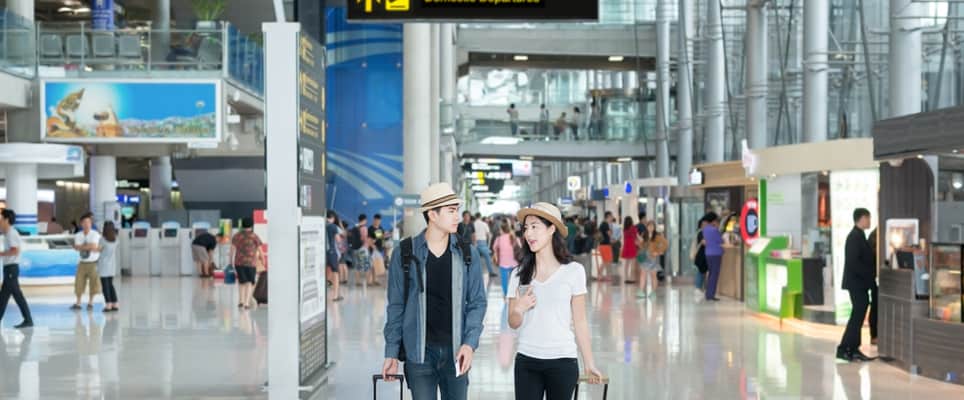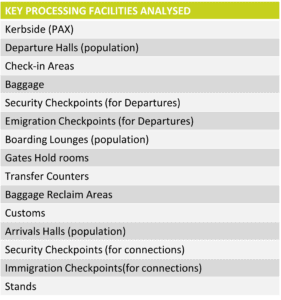The challenge
This large Asian International hub airport has exciting plans for growth, anticipating an increase of 35 million passengers per annum (MPPA) by 2040.
Passenger traffic is recovering steadily from the impact of COVID-19, predicted to bounce back to pre-pandemic levels in 2025. Looking to the future, a steady incline of growth is forecasted to reach 101 MPPA by 2040.
As global airport capacity planning experts, IATA asked AiQ Consulting to carry out a terminal capacity assessment to support the airports by answering the following questions in a bid to future proof the airport for this expected growth:
- What are the future terminal facility requirements at the airport?
- What could be a suitable corresponding terminal development option?
Several expansion options were to be considered including extending, providing new facilities or a combination of both. The challenge for AiQ was to analyse all development options identified in the airport’s master plan and recommend which option to be the most successful in meeting IATA’s current and future demand forecasts for the airport.
The solution
Using our modelling approach, we undertook several End-to-End terminal capacity assessments against differing levels of service to determine capacity and future facility requirements.
Key process facilities analysed were:
Model Inputs:
The inputs we used for our modelling included flight schedules, passenger flows and profiles, processing times and the current infrastructure and facilities.
Model outputs:
The outputs from our models were demand virus capacity, giving the levels of service including passenger waiting times and space available per passenger. From this, recommendations were given on the infrastructure and facilities required.
Four modelling scenarios:
Using the above inputs, four modelling scenarios were identified and used as below.
- Current Baseline- Typical Busy Day schedule pre COVID
- Short Term Current with improved facilities to address pinch points by adding new capacity – Typical Busy Day schedule pre COVID
- Future Forecast to 2040 with the current process and CONOPS (Conceptions of Operations)
- Future Forecast to 2040 Peak hour demand with future automation and changing passenger trends
Our team analysed and modelled all the terminal processes and compared outcomes for the above scenarios with IATA level of service requirements. We evaluated and presented our capacity assessment to the client, clearly demonstrating and visualising the benefits of our recommended option/s for increased throughput and a more efficient operation.
The benefits
The outcome of our capacity assessment highlighted sub-optimum processes and congested facilities within check-in, passport control and domestic security control and availability of stands. Recommendations were given to resolve these pinch points and ensure smooth current operations.
In running the calibration models and the three additional scenarios across several time horizons, we were able to get a good understanding of the LoS and capacity levels going into the future.
Our report informed the client of those passenger processors and holding facilities that will have sufficient capacity to meet demand in 2040 and those areas that require additional capacity. Working in partnership with IATA and a global leading airport architect we recommended the best development options that would bring the most benefits in terms of flexibility, capacity, connectivity, efficiency and utilisation. The client has now taken forward our findings to the national level for approval.
- Expert check-in, baggage, security systems knowledge
- Resolved immediate bottlenecks and pinch points
- A clear vision of the most effective option for increased capacity
- Prevented unnecessary investment costs
- A holistic view of the terminal
- Models to validate various expansion options
- Recommendations for new technologies
- Efficient stakeholder engagement
- Use of bespoke modelling technology


